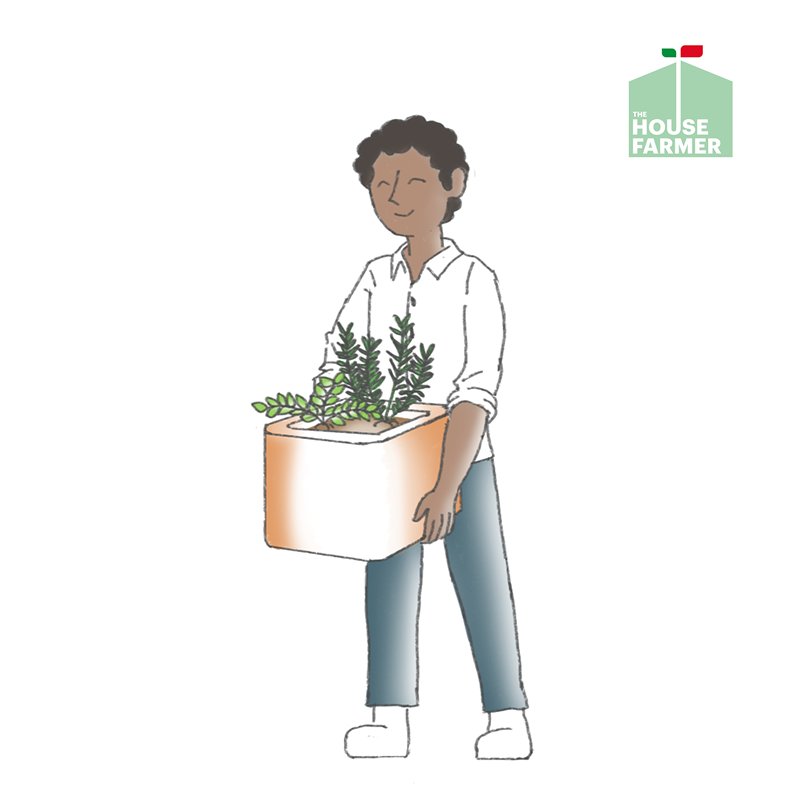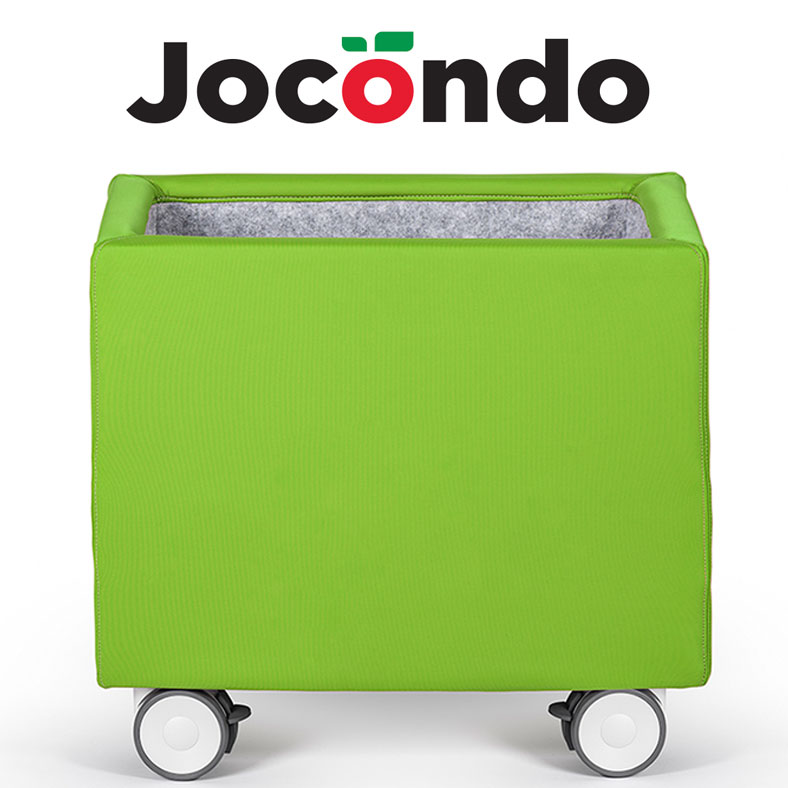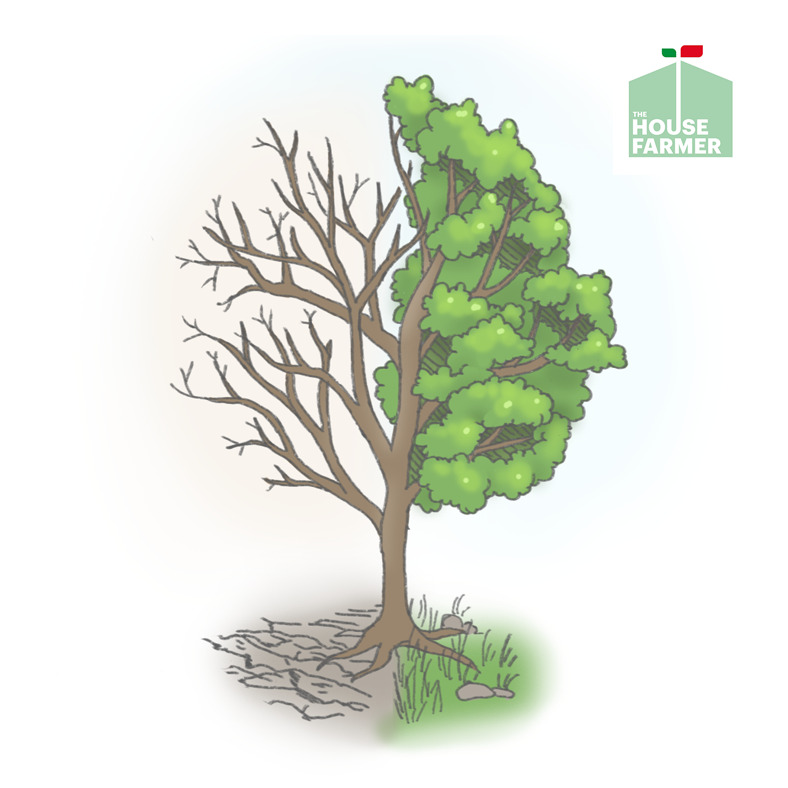
Recycled plant pots and containers: searching for eco-friendliness
We thought we’d digress a little to examine the materials which are currently used for planters and recycled plant pots and containers in vegetable gardens on balconies and terraces. Here are some of our considerations.
CAN TERRACOTTA BE CONSIDERED A RECYCLED PLANT POT?
The first and oldest known material produced by man (stone is of course older) is the terracotta vase for plants. The strong points of terracotta and clays in general is that they are easy to work, they are inexpensive, can be molded into different shapes and be both decorated and plain. Today, with industrial production, terracotta pots tend to be very standard; hand-made ones are more expensive. Terracotta’s advantage is its porosity which favours the internal-external exchange, guaranteeing the root system a good ventilation and an optimum level of humidity. In simple terms this means that during hot periods the terracotta ensures cooling of the substrate in which the plant grows, while its porosity guarantees the collection of moisture from the outside should the substrate be too dry. As a material it has lots of pluses, but also several negatives, especially if kept inhouse (terraces, balconies, communal areas in condos): they are heavy, they can easily break, are not very resistant to cold temperatures, difficult to move once they are full and they accumulate dirt with the formation of mold in old pots. The advantage is that being an inert material it is still easily disposable. However, compared to plastic containers of the same size it is more expensive.
STONE
For the type of vegetable garden we are envisaging we will not be taking stone into consideration. It is too heavy and definitely an outdoor material.
CEMENT
This inert material comes extremely cheap and is commonly used in public parks. It can sometimes be found on terraces and balconies, but we do not recommend it. It breaks with the cold and heat, and it is generally ugly. In order to make containers lighter other materials are added to the cement such as expanded clay or marble grit, thereby obtaining what are called “grit “or “granulated” containers. Not recommended.
CERAMIC
There is abundant offer of enamelled ceramic vases, however in vegetable gardens they are not an option. In glossy and opaque versions, they are mainly used for interiors as the material is poorly resistant to the cold winter weather. They really are not very suitable for the type of garden we are envisioning because essentially, they have no porosity. At the most they can be used as pot containers, however in the open they always risk breaking due to sudden changes in temperature.
METAL
Meal can be used for pot holders, but is inadequate in the construction of a vegetable garden and it's not at all an eco-friendly recycled plant pot.
PLASTIC MATERIALS FOR RECYCLED PLANT POTS
These materials currently make up nearly two thirds of the containers on the market both in the professional and hobby segments. They comprise a series of synthetic compounds (polyethylene, polyvinyl chloride, polypropylene, fiberglass) which are processed and shaped in a variety of sizes (from just a few cm to 110-120 cm deep) and different colours.
The main advantages are their strength, the fact that they last long, they are light and generally have a low price.
Their major (and most impacting) deficiency is represented by their low porosity as well as the fact that they tend not maintain an ideal heat exchange with the outside (except for the best ones). Manufacturing companies are trying to eliminate these drawbacks by increasing the number of drainage holes at the bottom or using specific canvases. They easily deteriorate due to temperature changes and often are not sustainable, being thrown in the generic waste together with the soil (especially the small ones). Currently, the production of plastic pots is being perfected and the market does offer pots with good structural characteristics, (stability of the material over time, resistance to light and temperature ranges). The longer-lasting ones are manufactured using a mix of polythylene and polypropylene.
Interesting recycled plant pots have been obtained by using polyethylene resin: they are nontoxic and recyclable, highly resistant to both freezing and prolonged high summer temperatures. Pots made of this material are in some ways similar to traditional terracotta pots, to the point that the term “biscuit-like” has been coined for it.
WOOD
Wooden beds certainly have the advantage of being beautiful (apart from some ghastly ones we found on Internet) and if they are properly built the material is ecofriendly. The disadvantage is that, especially outdoors, they perish quickly due to environmental factors. Also, water stagnation will often cause them to remain humid. Wooden containers need more maintenance compared to others and need to be repainted on average every 3-4 years. Moreover, treatments used to prolong the wood’s life are harmful to plants and the environment where the solute can end up. We do not recommend them for balconies and terraces unless you use appropriate protective measures or expose them as little as possible to rain.
RECYCLED PLANT POTS AND BIODEGRADABLE CONTAINERS
The main characteristic of this recently introduced material is its ability to decompose completely once it is no longer used in a more or less short period of time depending on the starting material and its size. This way there is no disposal problem. The most well-known and widely used eco-friendly containers are medium to small in size and are made using compressed peat.
As well as being highly porous, the material contributes, albeit to a minimal extent, to provide growing plants with nutritional support thanks to the composition of its basic elements. Coconut fibre, starch and cellulose are also used to make pots of a small to medium size.
The most recent eco-friendly recycled plant pots are those made of rice hull (i.e. the waste from rice processing), blended with a particular natural resin in order to produce a sort of artificial wood. Such containers come in a variety of shapes, sizes and colours.
These pots are suitable to grow plants which will subsequently be transplanted into the open ground (eg. vegetables) without being taken out of the pot. The possibility of directly burying the biodegradable container preserves the root systems, in particular the more delicate ones, from the inevitable damage that occurs when the clods of soil are removed from the container.
Those made of compressed peat are especially suited to small annual flowering plants such as primroses and violets, as well as medium-sized flowering plants, such as geraniums and petunias which can be planted directly in large trays without being removed.
They can also be used for sowing vegetables with delicate roots such as tomatoes, peppers, eggplant, pumpkins and courgettes. Once these have come to complete development, they can be directly put into the garden soil or alternatively, in containers of a more adequate size.
Biodegradable pots can be used to root cuttings of outdoor shrub species, such as laurel and oleander. Once they have developed they can be transplanted into the ground without being removed.
All eco-friendly pots, as well as degrading in the terrain, can be disposed of with the collection of organic waste. This way they undergo complete degrading and are transformed into precious compost.
Finally, we have resin, a much more resistant material, both to shock and blows, cold and ice, as well as to falls.
GLASS
Glass is an amorphous substance, compact and perfectly homogeneous. It is prevalently transparent and characterized by a state of aggregation which is solid but not crystalline. In fact, glass is considered a liquid with a very high viscosity and not a real solid at all as it does not present a regular internal crystalline structure.
RECYCLED MATERIALS AND THE USE OF TECHNOLOGY – THE NEW EVOLUTION
Following our long list of the different materials on the market, we still feel we are missing what would enable us to run an urban vegetable garden efficiently and in complete harmony: a functional product which is also well designed, beautiful, easy to move, autonomous when it comes to irrigation but maybe which can also be controlled remotely. Something which enables us to have not only an aesthetically well-designed product but above all guarantees an excellent garden crop.
In this regard we are working on a new project to provide you with an integrated garden system (with quality soil and seeds). We will tell you more about it and its urban garden benefits on the pages of this blog and keep you updated.



